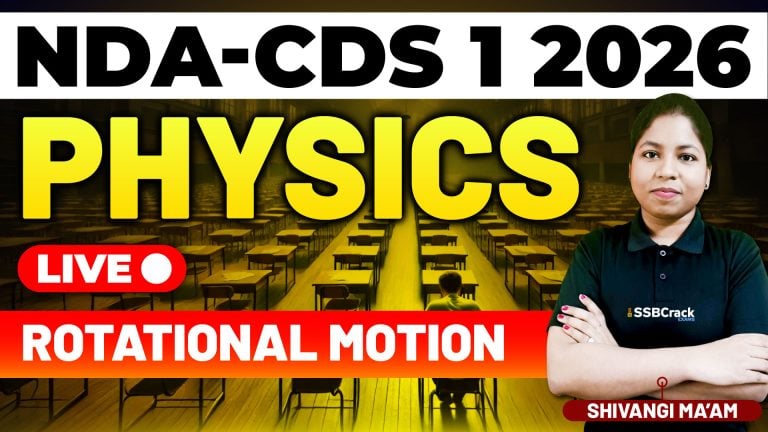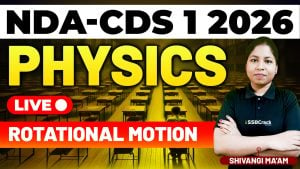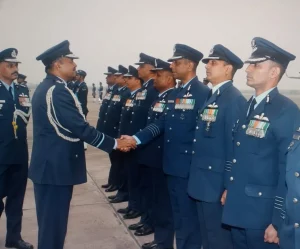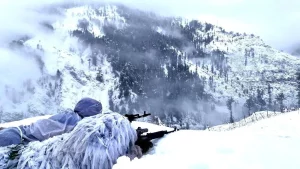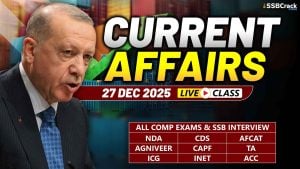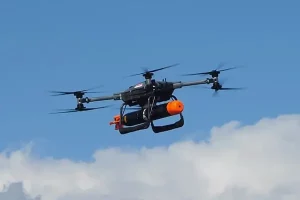Preparation for competitive exams like the Combined Defence Services (CDS) and Air Force Common Admission Test (AFCAT) requires a comprehensive understanding of various mathematical concepts. One of the key areas tested in these exams is mensuration, specifically the calculation of volumes and surface areas of different geometric shapes. A recent class dedicated to this topic covered essential sub-topics, including the volume, curved surface area, and total surface area for shapes such as cubes, cuboids, cylinders, cones, frustums, spheres, and hemispheres. This article highlights the main points discussed in the class and emphasizes the importance of practicing multiple-choice questions (MCQs) for effective preparation.
Understanding Mensuration: Volume and Surface Areas
Mensuration is a branch of mathematics that deals with the measurement of geometric figures, including their areas, volumes, and surface areas. Understanding how to calculate these measurements is crucial for solving problems in competitive exams.
Key Geometric Shapes and Their Properties
1. Cube
A cube is a three-dimensional shape with six equal square faces. Understanding how to calculate its volume and surface area is fundamental.
- Volume: The amount of space occupied by the cube.
- Curved Surface Area (CSA): Not applicable, as all faces are flat.
- Total Surface Area (TSA): The sum of the areas of all six faces.
2. Cuboid
A cuboid is similar to a cube but has rectangular faces. It is important to understand how to calculate the volume and surface areas for cuboids with different dimensions.
- Volume: The amount of space occupied by the cuboid.
- CSA: Not applicable, as all faces are flat.
- TSA: The sum of the areas of all six rectangular faces.
3. Cylinder
A cylinder has two circular bases and a curved surface connecting them. Calculating the volume and surface areas of a cylinder is a common exam question.
- Volume: The space inside the cylinder.
- CSA: The area of the curved surface.
- TSA: The sum of the curved surface area and the areas of the two bases.
4. Cone
A cone has a circular base and a pointed top. Understanding how to calculate its volume and surface areas is crucial.
- Volume: The space inside the cone.
- CSA: The area of the curved surface from the base to the tip.
- TSA: The sum of the curved surface area and the area of the base.
5. Frustum
A frustum is a cone with the top cut off parallel to the base. It is essential to know how to calculate the volume and surface areas for this shape.
- Volume: The space inside the frustum.
- CSA: The area of the curved surface between the two bases.
- TSA: The sum of the curved surface area and the areas of the two bases.
6. Sphere
A sphere is a perfectly round three-dimensional shape. Calculating its volume and surface area is straightforward once you know the formulas.
Key Points:
- Volume: The space inside the sphere.
- CSA and TSA: Are the same, as the surface is uniform all around.
7. Hemisphere
A hemisphere is half of a sphere. Understanding how to calculate its volume and surface areas is important for various exam questions.
- Volume: The space inside the hemisphere.
- CSA: The area of the curved surface.
- TSA: The sum of the curved surface area and the area of the flat circular face.
Importance of Practicing MCQs
Practicing multiple-choice questions (MCQs) is essential for mastering mensuration. MCQs help in applying theoretical knowledge to practical problems, enhancing both speed and accuracy. Here are some benefits of practicing MCQs:
- Application of Concepts: MCQs require you to apply formulas and concepts to solve problems, reinforcing your understanding.
- Exposure to Variety: Solving different types of MCQs exposes you to various problem-solving scenarios.
- Time Management: Regular practice improves your ability to manage time effectively during exams.
- Confidence Building: Familiarity with question patterns and consistent practice builds confidence.
Example MCQs Discussed in Class
Here are some example MCQs similar to those discussed in the class, along with their solutions:
Example 1: Cube
Question: Find the total surface area of a cube with a side length of 5 cm.
Solution:
- Calculate the total surface area by summing the areas of all six faces.
Answer: The total surface area is 150 cm².
Example 2: Cylinder
Question: A cylinder has a radius of 3 cm and a height of 7 cm. Find its volume.
Solution:
- Calculate the volume using the formula for the volume of a cylinder.
Answer: The volume is approximately 197.92 cm³.
Example 3: Cone
Question: Find the curved surface area of a cone with a radius of 4 cm and a slant height of 6 cm.
Solution:
- Calculate the curved surface area using the appropriate formula for a cone.
Answer: The curved surface area is approximately 75.36 cm².
Conclusion
Mensuration is a critical topic for the CDS and AFCAT exams, requiring a solid understanding of geometric properties and the ability to apply formulas accurately. The class on mensuration provided a comprehensive overview of calculating volumes and surface areas for various shapes, focusing on practical problem-solving through extensive discussion of important MCQs.
By understanding the concepts, memorizing key formulas, practicing regularly, and employing strategic problem-solving approaches, students can master mensuration and excel in their exams. Regular practice and a strategic approach to problem-solving will ensure that you are well-prepared to tackle any mensuration questions that come your way. Stay focused, practice diligently, and approach each problem with confidence. Good luck!




